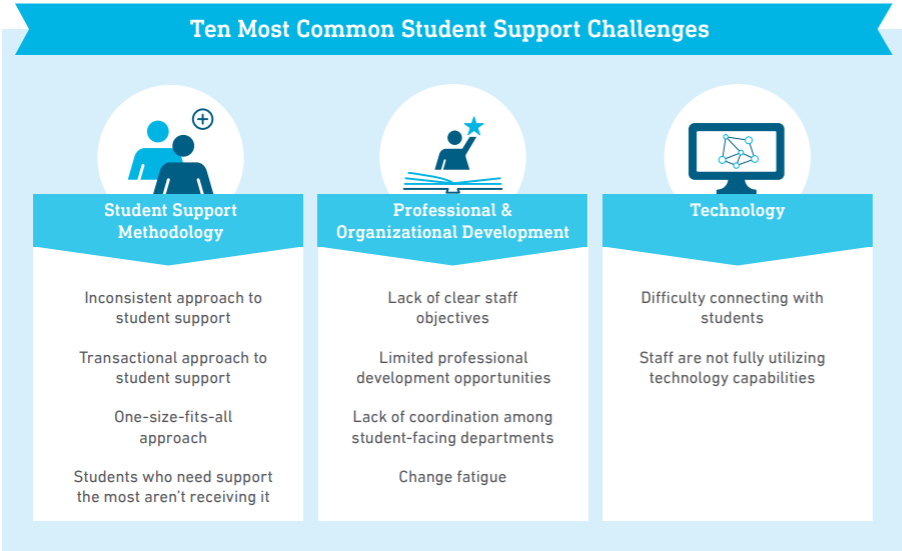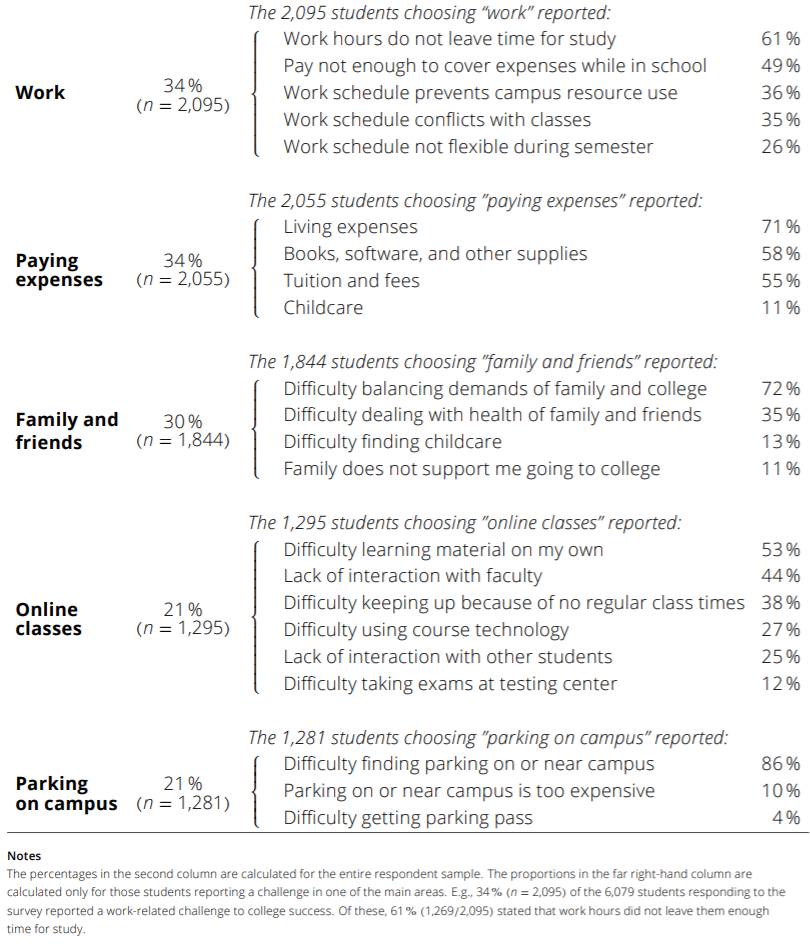Commentary
Running Lean
Last month’s registrar staffing report was a popular read among our members. I was particularly interested in the percentage of large institutions (>10,000 students) that have 10 or more FT staff compared to those that have fewer than 10. I followed up with a few of the respondents who have fewer than 10 to see if that number of employees works for their institution and, if so, how. This month’s commentary is from Jennifer Creech, the registrar at the University of Dayton. She shared with me how her lean staff gets things done, and I asked her to share her thoughts directly with you.
Understand the strategic priorities at your institution. Create your vision. Align your team. Looking back over the last three years, we were not intentionally trying to reduce the number of full-time staff. However, we were at a crossroads because three full-time employees with a combined 117 years of institutional knowledge retired within six months of each other. We could have filled those positions and continued with business as usual, or we could take a step back and realign the team to optimize their talents and skills and back fill where necessary. We chose the latter, and the subsequent changes happened organically.
The vision for the registrar’s office is to impact and influence the student experience beginning with the campus visit through graduation and beyond. It is this vision that helped us set our goals. We systematically combed through every task associated with our office.
If the tasks didn't fulfill the strategic priorities or the vision, we had three choices: delegate, automate, or eliminate. If a task was kept, we began seeking evidence and metrics to improve the work to drive a greater impact.
As a result of these changes, our office staff are no longer just viewed as record keepers with data clerk responsibilities, which is how we were viewed historically. We are now able to articulate to our internal stakeholders why we need to be at the table when creating academic policy, approving curriculum, or optimizing space on campus. In addition, how we hire full-time staff has evolved. We now look for specific characteristics of a leader, such as clarity of communication, drive, adaptability, ownership, inclusiveness, and passion. We also examine whether or not the responsibilities associated with a vacant position constitute a full-time position before we post the job. We have performance reviews and invest in leadership development acknowledging that existing team members are at different places on the leadership spectrum. In summary, our lean team of seven full-time staff seek innovation and lead institutional change to support our vision and mission.
Jennifer M. Creech
Registrar
University of Dayton
jcreech1@udayton.edu
AACRAO Research Update
In the next couple of months, we hope to add IPEDS admissions data to the membership database so that data can be pulled into the survey results and used as factors in some analyses.
Invitation to Participate in a Survey
AACRAO is facilitating the delivery of the U.S Department of Justice survey invitation below. Participation is voluntary and anonymous.
“Dear Colleague:
As part of a fellowship project in the Office of Sex Offender Sentencing, Monitoring, Apprehending, Registering, and Tracking (SMART), Office of Justice Programs at the U.S. Department of Justice, we are exploring how institutions of higher education share, respond and coordinate information to prevent sexual assault perpetration. This project will collect information about current practices utilized by colleges and universities with regards to the following:
-
Policies and practices regarding registered sex offenders who may be students or employees
-
Policies and practices regarding individuals found responsible and sanctioned for campus sexual misconduct policy violations
-
Policies and practices used in reviewing criminal or disciplinary sexual misconduct history of prospective or current students
The information from this questionnaire will be used to inform a report to the field. Responses to the questionnaire are confidential and will not be linked back to you personally or to your institution. You will be able to leave your contact information if you would like to share your institution’s policies or protocols. Any institutions that voluntarily share policies or protocols won’t be identified by institution name (and only general information would be shared) in any published report unless the institution agrees in writing.
Your institution is invited to take approximately 10-15 minutes to complete a questionnaire on these important topics. Click HERE to access the questionnaire or cut and paste the following link into your browser: https://www.surveymonkey.com/r/CISR2018. For more information about this project see the attached letter.
Input from institutions of higher education with innovative approaches and any sample policies and procedures are of special interest. Please forward this email invitation to any other institutions that you feel might be interested in contributing feedback.
Thank you for your time and your important work!
Sincerely,
Joan Tabachnick
Visiting Fellow
USDOJ SMART Office"
Current Higher Education Research and Related Topics
Longitudinal Study of Dual Enrollment
A new Data Point highlights the percentage of 23,000 high school students who completed dual enrollment courses. The figure below is from the article.
Percentage of fall 2009 ninth-graders who ever took courses for postsecondary credit in high school, by demographic characteristics.

SOURCE: U.S. Department of Education, National Center for Education Statistics, High School Longitudinal Study of 2009 (HSLS:09), Second Follow-Up Restricted-Use Data File.
NPR Special Series: Changing Face of College
In case you have not run across this series and have some interest, National Public Radio (NPR) produces a special series of articles and podcasts on the changing face of college.
Ten Recommendations from Inside Track
InsideTrack has synthesized the insights from 40 institutional assessments in a new white paper highlighting recommendations for the 10 most common challenges around student supports methodology, professional and organizational development, and technology. The figure below is from the white paper and summarizes their findings.

Source: InsideTrack
International Graduate Students: Fall 2018
The Council of Graduate Schools examined the application and enrollment data for international graduate students. They found that both applications and enrollment for fall 2018 are lower than fall 2017 (see the figure below). The number of applicants and enrollments from China did not change, but there was a 12% loss in applicants from India, the Middle East and North Africa as well as a 10% decrease from Oceania and 3% decrease from Europe.
Annual Changes in international graduate applications and first-time enrollment by degree objective, institutional type, Fall 2017 to Fall 2018
Source: Council of Graduate Schools, International Graduate Applications and Enrollment, Fall 2018.
Transfer Student Success at Selective Four-Year Institutions
The Jack Kent Cooke foundation commissioned a report on community college transfer students. Key findings include:
-
Selective four-year institutions are less likely to enroll community college students than other institutional types
-
Students who do transfer are at least equal, if not more likely, to graduate than students who enrolled directly out of high school
The authors also acknowledge that there are limits to the findings based on the data available on academic performance prior to transfer and demographics.
How Colleges Spend Money
The American Council of Trustees and Alumni has created an online tool to examine and compare how almost 1,500 colleges spend money. The data in this web-based tool is pulled from IPEDS.
Recruiting and Retaining Online Faculty
Learning House and the American Association of State Colleges and Universities (AASCU) partnered to survey chief academic officers at member institutions and conduct interviews with 10 of those respondents. They found the following:
-
Nearly 40% of courses offered are online or blended;
-
Faculty training and development is not consistently mandated;
-
The evaluation of online faculty is not universal;
-
Faculty engagement is not often defined in policy; and
-
Hiring practices vary.
New Survey on the Challenges College Student Face
RISC (Revealing Institutional Strengths and Challenges) completed a survey of more than 50,000 community college students about the challenges they face in the following areas: academic support services, campus environment, finances and financial aid, course success, work, and personal issues. The top five challenges are summarized in the figure below from the report.
Top five challenges: detailed responses

Source: Table 3.1: https://www.risc.college/sites/default/files/2019-01/RISC_2019_report_natl.pdf
Alternative Measurement of Opportunity
A working paper published by the Stanford Institute for Economic Policy Research presents an alternative to the standard measures of Pell share, Bottom Quintile share, and Intergenerational Mobility to more accurately reflect opportunity based on a “relevant pool” from which the institution can draw students. This article is also summarized in EducationNext and includes the following illustrative examples of the data analyses.

